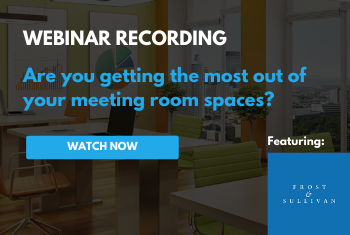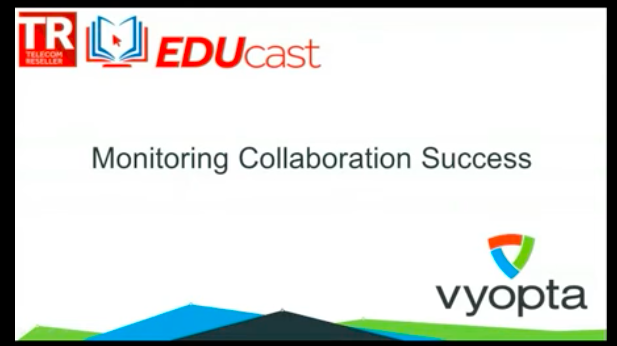One of the keys to maintaining a competitive advantage is anticipating coming disruptions and adapting ahead of time. Today, rapid changes in technology and culture are reshaping the modern workplace. We recently hosted a webinar, Are You Getting the Most Out of Your Meeting Spaces? which explores in more detail how companies can adapt to the transformation of the workplace by providing the spaces and resources to maximize efficiency, eliminate downtime, and foster both collaboration and innovation. Here are some highlights from the webinar.
Changes: Generational, Communicational, Environmental
Today, businesses are more likely to execute projects using full-time, part-time, and freelance employees in order to draw from the best resources on-demand. And companies are investing in more agile workstyles though dynamic, versatile office spaces that accommodate new ways of doing business. For example, the Millennial and Gen Z generations make up the highest percentage of the workforce today, and they have a strong preference for personalized communication, engaging experiences, and richer forms of communication. More than nine out of ten say that technology influences their job choice. Four out of five want to work with cutting-edge technology, and another nine out of ten prefer to choose their work location. To meet these needs, the modern office must be laser-focused on collaboration, and that starts with video.
The number of video meetings is growing exponentially—as a percentage of total online meetings, expect to see a rise from 10 percent to 52 percent in the next five years. In 2016, the video conference market saw $6.4B in revenue; by 2023, that number is expected to hit $12.8B. Video builds trust and familiarity amongst coworkers who may never meet face-to-face. 87 percent of remote workers feel more connected through video conferencing, and companies see strong benefits: boosting product innovation 6x, accelerating decision making 5x, and improving customer experience 6x.
Meeting spaces are also transforming. In the past, these rooms were outdated and underutilized. Today they are smart and intuitive—designed to foster innovation and productivity. A heavy focus is placed on engaging conversations, seamless content sharing, and communication across multiple modes and devices. Rather than one-dimensional phone conversations, video captures the full spectrum of information and interaction. And these shifts are ushering in changes to the very nature of meetings themselves. Today, meetings are shorter, more frequent, and often ad-hoc. In order to drive outcomes and collaboration, companies must meet the need for more rooms and better technology.
How to Adapt And Get the Most Out of Your Spaces
There are many challenges that arise with these workplace shifts. In the past, meeting spaces were not closely tracked or managed as a corporate asset. In today’s environment, this leads to hundreds of thousands of wasted dollars due to misutilization.
Consider these stats:
- 50 percent of top 10 offenders for missed bookings are recurring meetings booked by ex-employees
- 40 percent of booked meeting rooms go unused
- 73 percent of meetings involve 2-4 people, but over half of meeting rooms are built for 7+
- 60 percent of a room endpoint’s utilization is outside of a call
Whether it’s “zombie” meetings that go unattended indefinitely, underutilized rooms that don’t fit the meeting’s needs, room squatters, or ghost meetings, it is critical for companies to reclaim these spaces in order to utilize resources effectively.
This is where IT and facilities managers come in. They need data-driven insights that will enable them to optimize their resources. With in-depth information, they have the opportunity to gain a competitive advantage for the company by improving meeting efficiency, eliminating downtime, and fostering innovation. Here are some key questions these managers must ask:
- Which are the most- and least-frequently booked rooms? What is the usage and booking of rooms across time zones and room sizes?
- How many no-show and ghost meetings happen each week? Who are the offenders? How can the rooms be released automatically?
- How many zombie meetings are on the calendar? How many are added when people leave the company? Can IT free up these rooms?
- Is the number of attendees aligned with the size of the meeting space? I.e. are the spaces under- or overutilized?
- Which meeting technologies are most-used? Which solutions deserve more investment?
- What are the busiest meeting times? How can IT guide employees to shift meeting times or even utilization? Which room sizes are the most popular? When are the best times to schedule repairs/maintenance?
To answer these and many other questions, it is critical to employ a meeting room management software solution which provides data-driven insights. When choosing a software, make sure it offers the following:
- Room Bookings Visibility – integrates with your calendaring system to track booking behavior and room utilization
- Room Occupancy Data – captures people count metrics from video endpoints and supports collection of occupancy data from built-in sensors
- Room Technology Usage – vendor-agnostic platform that tracks usage of room technology, including video endpoints, phones, and room displays to maximize ROI
These are just a few of the critical data points needed to get the absolute most out of your meeting spaces. By considering the changes to workspace culture and delving into the data, IT and facilities managers can focus their energy on the areas that will generate the best results for employees and the company itself. To learn more about how Vyopta’s solution provides the visibility you need to make data-driven decisions, watch our webinar, Are You Getting the Most Out of Your Meeting Spaces? or see a demo.








